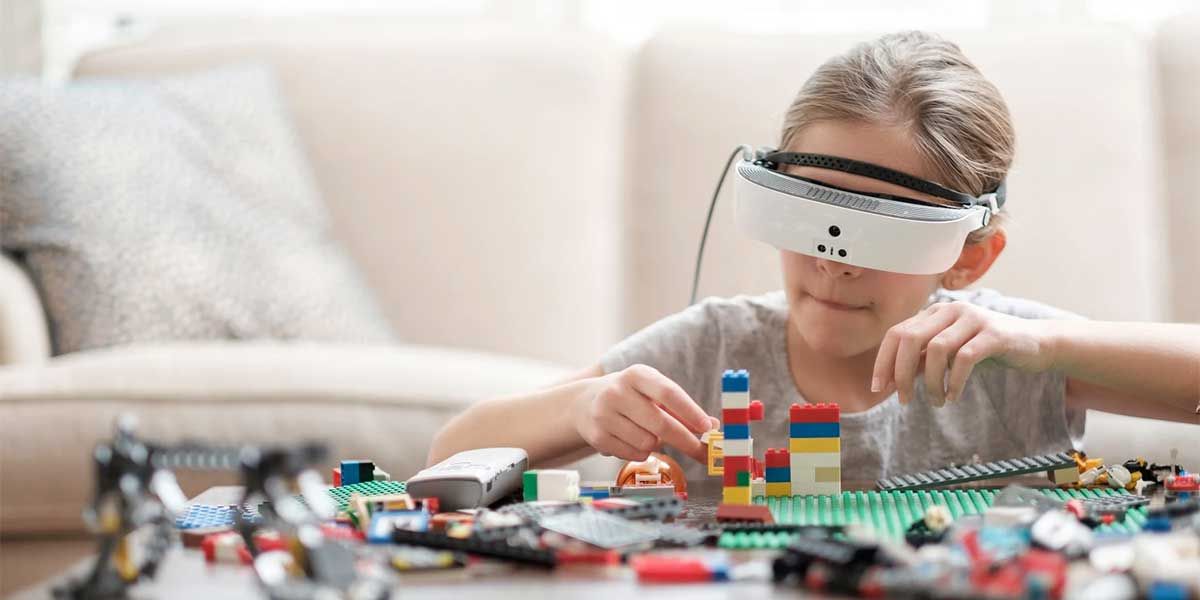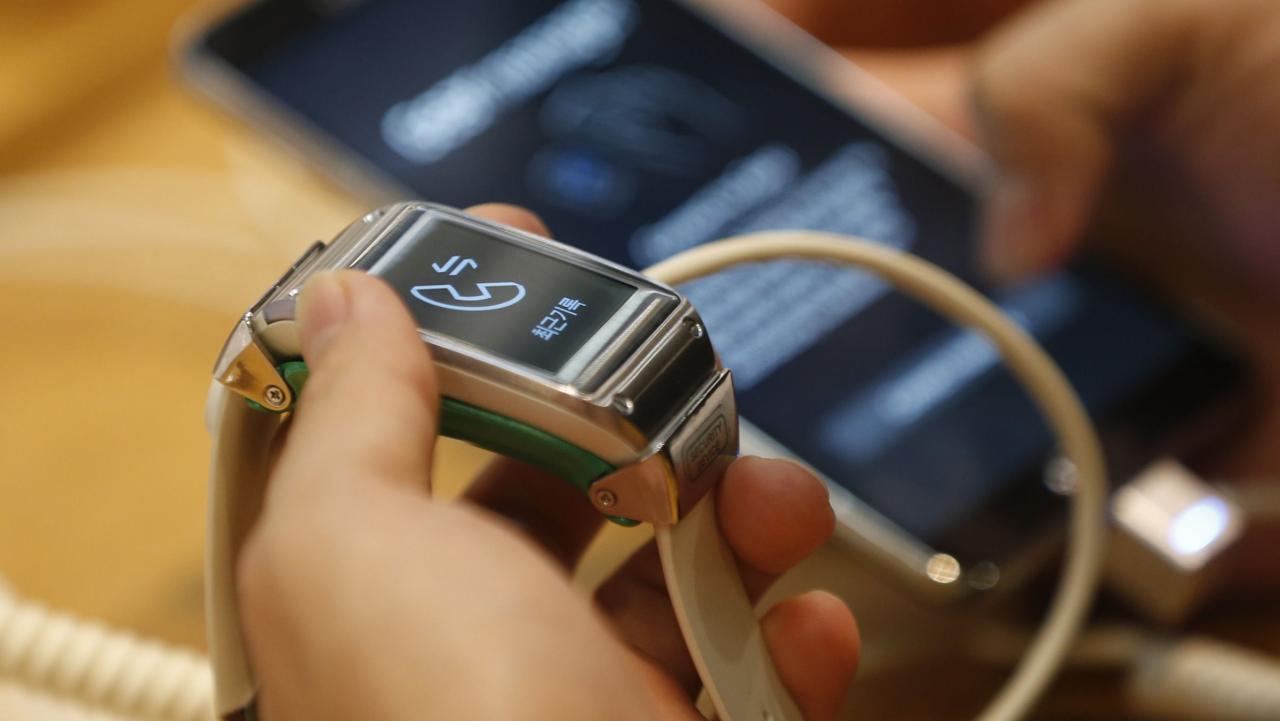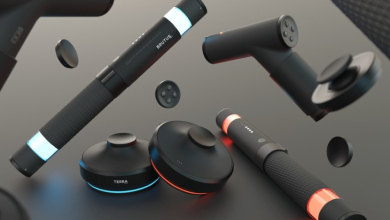Breakthrough Gadgets Set New Industry Standards

In today’s rapidly evolving technological landscape, breakthrough gadgets are not only capturing consumer attention but also reshaping entire industries. As technology continues to advance at an unprecedented rate, innovative devices are emerging with features that once belonged in science fiction. These gadgets are setting new industry standards, driving digital transformation, and redefining how we interact with technology in our everyday lives. This article delves into the world of revolutionary gadgets, exploring their evolution, key features, and the profound impact they have on various sectors. We will also examine case studies, emerging trends, and the future potential of these cutting-edge devices.
The Evolution of Modern Gadgets
Over the past decade, the pace of innovation has accelerated dramatically. What began as incremental improvements in consumer electronics has now turned into radical transformations. The journey from bulky, single-function devices to sleek, multi-functional smart gadgets is a testament to relentless innovation in research and development. Today, gadgets are no longer mere tools; they are intelligent systems that integrate seamlessly into our daily routines.
A. Historical Perspective
Historically, gadgets were designed with a singular purpose. Early mobile phones, for example, were solely used for voice communication. However, with the advent of smartphones, these devices evolved into powerful computers capable of handling complex tasks. This transformation was driven by:
A. Technological Convergence: The merging of different technologies into a single device.
B. Consumer Demand: A growing need for portable, multi-functional devices.
C. Advancements in Materials: The development of lightweight, durable materials that enhance device portability.
D. Software Innovation: The creation of versatile operating systems that can support a range of applications.
These factors have paved the way for today’s breakthrough gadgets, which boast capabilities such as artificial intelligence, augmented reality, and Internet of Things (IoT) integration.
B. From Concept to Reality
Innovators and tech companies invest heavily in research to push the boundaries of what gadgets can do. Prototypes evolve into market-ready products through rigorous testing, user feedback, and continuous refinement. This process ensures that when these devices hit the market, they meet the high standards expected by modern consumers and businesses alike.
Key Features Defining Breakthrough Gadgets
Breakthrough gadgets are characterized by their ability to deliver superior performance, enhanced usability, and integrated smart technologies. Here are some of the most significant features that define these revolutionary devices:
A. Advanced Connectivity
Modern gadgets are built on robust connectivity platforms that enable seamless communication between devices. This connectivity is critical in today’s interconnected world, where the ability to sync data, share information, and collaborate in real time is paramount.
A. 5G Integration: Many new gadgets come with 5G capabilities, offering faster data speeds and more reliable connections.
B. Bluetooth 5.0 and Beyond: Enhanced Bluetooth protocols allow for improved data transfer and connectivity over short distances.
C. Wi-Fi 6 Adoption: The latest Wi-Fi standards provide increased bandwidth and better performance in crowded environments.
B. Intelligent Automation and AI
Artificial Intelligence (AI) and machine learning are at the heart of breakthrough gadgets. These technologies empower devices to learn from user interactions, predict needs, and offer personalized experiences.
A. Voice Assistants: Devices integrated with AI-powered voice assistants can perform tasks, answer questions, and control smart home systems with simple voice commands.
B. Predictive Maintenance: For industrial gadgets, AI algorithms can predict when maintenance is required, thereby reducing downtime and enhancing productivity.
C. Smart Recommendations: Consumer gadgets utilize AI to suggest apps, media, and services tailored to individual preferences.
C. User-Centric Design
Ergonomic and aesthetically pleasing designs are crucial in today’s gadget market. Manufacturers are focusing on intuitive interfaces and versatile functionalities to meet diverse user needs.
A. Touchscreen Interfaces: High-resolution touchscreens provide interactive and immersive experiences.
B. Minimalist Aesthetics: Sleek, minimalistic designs not only look attractive but also improve usability by reducing clutter.
C. Customization Options: Many gadgets now offer customization in both software and hardware, allowing users to tailor their experience.
D. Enhanced Security Features
Security remains a top priority as gadgets become more connected and integral to daily operations. Advanced security protocols help protect sensitive data and prevent cyberattacks.
A. Biometric Authentication: Fingerprint scanners, facial recognition, and voice recognition technologies are standard in many new gadgets.
B. End-to-End Encryption: Ensures that data transmitted between devices is secure and inaccessible to unauthorized users.
C. Regular Security Updates: Manufacturers frequently release firmware updates to address vulnerabilities and enhance protection.
E. Sustainability and Eco-Friendliness
In response to growing environmental concerns, many breakthrough gadgets are designed with sustainability in mind. Eco-friendly practices in manufacturing and energy-efficient operations are increasingly becoming industry norms.
A. Energy-Efficient Components: Devices are built to consume less power while maintaining high performance.
B. Recyclable Materials: Many gadgets now incorporate recyclable materials to minimize environmental impact.
C. Green Certifications: Products are often designed to meet international environmental standards, such as ENERGY STAR or EPEAT.
Industry Impact: Changing the Landscape
Breakthrough gadgets are not confined to consumer electronics; their influence spans across multiple industries. From healthcare to manufacturing, these devices are driving innovation and efficiency in unprecedented ways.
A. Healthcare and Medical Devices
The integration of advanced gadgets in healthcare has led to improved patient outcomes and streamlined operations. Innovations include wearable devices that monitor vital signs, portable diagnostic tools, and telemedicine solutions.
A. Remote Monitoring: Wearable devices can continuously track patient health and transmit data to healthcare providers in real time.
B. Telehealth Solutions: Gadgets enable virtual consultations, reducing the need for physical appointments and expanding access to medical care.
C. Portable Diagnostic Tools: Compact devices offer on-the-spot diagnostics, particularly beneficial in emergency and rural settings.
B. Manufacturing and Industrial Automation
In the manufacturing sector, breakthrough gadgets are pivotal in enhancing productivity and ensuring operational safety. These devices support smart factories and automated production lines.
A. IoT-Enabled Sensors: Monitor equipment performance and environmental conditions to optimize manufacturing processes.
B. Robotics and Automation: Advanced robotics systems improve precision, speed, and safety in production.
C. Predictive Analytics: Utilize data from gadgets to foresee maintenance needs and avoid costly downtime.
C. Education and Remote Learning
The education sector has witnessed a significant transformation thanks to breakthrough gadgets. Interactive whiteboards, tablets, and virtual reality (VR) tools are revolutionizing the learning experience.
A. Interactive Devices: Tablets and smartboards facilitate interactive learning and engagement in classrooms.
B. Virtual Reality Classrooms: VR technology creates immersive educational experiences, making learning more engaging and effective.
C. Remote Learning Tools: Gadgets enable virtual classrooms and distance learning, expanding access to quality education worldwide.
D. Retail and Customer Engagement
Retailers are leveraging breakthrough gadgets to enhance customer experiences, streamline operations, and boost sales. The integration of smart technology into retail environments is creating more personalized shopping experiences.
A. Smart Checkout Systems: Reduce wait times and improve accuracy at the point of sale.
B. Augmented Reality Shopping: AR tools allow customers to visualize products in their own space before making a purchase.
C. Data-Driven Personalization: Use customer data to tailor marketing strategies and product recommendations.
Emerging Trends in Gadget Innovation
As technology continues to evolve, several trends are emerging that promise to further transform the gadget industry. Staying ahead of these trends is essential for businesses looking to remain competitive in a digital-first world.
A. Integration of 5G Technology
The rollout of 5G networks is set to revolutionize gadget performance by providing faster speeds, lower latency, and more reliable connections. This technology is critical for supporting the increased data demands of modern gadgets.
A. Enhanced Mobile Experiences: Faster connectivity improves the performance of mobile devices and smart gadgets.
B. Internet of Things Expansion: 5G enables more devices to connect seamlessly, fueling the growth of IoT ecosystems.
C. Real-Time Data Processing: Improved speeds allow for instantaneous data processing and analytics.
B. Expansion of AI Capabilities
Artificial Intelligence continues to push the boundaries of what gadgets can do. Future devices will offer even more sophisticated AI integrations, from natural language processing to advanced machine learning algorithms.
A. Improved Personalization: AI will provide even more accurate and personalized user experiences.
B. Autonomous Functionality: Gadgets will become increasingly autonomous, performing tasks without direct human intervention.
C. Enhanced Decision-Making: Real-time data analysis will enable smarter, data-driven decisions across various applications.
C. Augmented and Virtual Reality Advancements
The fields of augmented reality (AR) and virtual reality (VR) are rapidly advancing, opening new avenues for gadget innovation. These technologies are set to redefine user interaction and create immersive experiences.
A. Immersive Gaming: Next-generation AR/VR gadgets will offer truly immersive gaming environments.
B. Virtual Collaboration: VR tools will facilitate realistic virtual meetings and collaborative workspaces.
C. Enhanced Training Programs: Industries such as healthcare and manufacturing will benefit from VR-based training simulations.
D. Eco-Friendly and Sustainable Designs
Environmental sustainability is becoming a critical consideration in gadget design. Future devices will place even greater emphasis on eco-friendly materials, energy efficiency, and sustainable production processes.
A. Biodegradable Components: Innovations in material science are leading to the development of biodegradable gadgets.
B. Low Power Consumption: Advances in energy-efficient technology will continue to reduce the environmental impact of devices.
C. Circular Economy Models: Companies are exploring ways to recycle and repurpose gadgets to minimize waste.
Case Studies: Real-World Applications
To understand the tangible impact of breakthrough gadgets, let’s examine a few case studies that illustrate how innovative devices are revolutionizing industries.
A. Smart Manufacturing at Scale
A leading manufacturing firm integrated IoT sensors and robotics into its production line, resulting in a 40% reduction in downtime. The real-time monitoring provided by these gadgets allowed the company to preemptively address maintenance issues and optimize production schedules. This transformation not only increased efficiency but also enhanced worker safety through automated alerts and protocols.
B. Healthcare Transformation with Wearable Tech
A global healthcare provider adopted wearable devices to monitor patient vitals continuously. These gadgets transmitted critical health data to medical teams, enabling timely interventions and reducing hospital readmissions. The successful implementation of this technology demonstrated the potential of wearables in improving patient outcomes and streamlining healthcare operations.
C. Revolutionizing Retail with Augmented Reality
A prominent retail chain launched an augmented reality shopping application that allowed customers to visualize furniture in their homes before making a purchase. This breakthrough gadget integration resulted in higher customer satisfaction, reduced return rates, and boosted overall sales. The case highlighted how digital innovation can create more engaging and personalized retail experiences.
Challenges in Adopting Breakthrough Gadgets
While breakthrough gadgets offer tremendous advantages, their adoption is not without challenges. Understanding these obstacles is essential for businesses and consumers alike.
A. High Initial Investment
Cutting-edge gadgets often come with a premium price tag. The initial investment required for advanced technology can be a barrier for small businesses and individual consumers. However, the long-term benefits, including increased efficiency and reduced operational costs, can justify the upfront expense.
B. Integration Complexities
Integrating new gadgets into existing systems may present technical challenges. Companies need to ensure compatibility and seamless integration with legacy systems. This process often requires expert consultation and may involve additional training for staff.
C. Security and Privacy Concerns
As gadgets become more interconnected, they also become more vulnerable to cyber threats. Ensuring robust security measures and data privacy is critical, especially when sensitive information is at stake.
A. Regular Security Audits: Conduct frequent evaluations to identify and address vulnerabilities.
B. Data Encryption: Implement state-of-the-art encryption protocols to safeguard information.
C. User Education: Train users on best practices to mitigate security risks.
D. Rapid Technological Obsolescence
The pace of technological change means that today’s breakthrough gadgets can quickly become outdated. Companies and consumers must be prepared to upgrade or replace devices to remain competitive and secure.
The Future of Breakthrough Gadgets
Looking ahead, the evolution of breakthrough gadgets promises to drive further innovation across all sectors. The integration of AI, 5G, AR/VR, and sustainable practices will continue to set new industry standards. Future gadgets are expected to be more intuitive, adaptive, and environmentally friendly.
A. Next-Generation User Experiences
As technologies converge, user experiences will become more immersive and personalized. Devices will seamlessly integrate into everyday life, offering unparalleled convenience and functionality.
A. Adaptive Interfaces: Future gadgets will learn from user behavior and adjust interfaces for optimal usability.
B. Haptic Feedback: Advanced tactile technologies will provide realistic physical feedback, enhancing the interactive experience.
C. Multimodal Interaction: Combining voice, gesture, and touch, devices will offer versatile interaction methods tailored to diverse needs.
B. Expansion of Ecosystem Connectivity
The future will see an even tighter integration of gadgets within interconnected ecosystems. From smart homes to intelligent cities, breakthrough gadgets will play a central role in the digital transformation of urban and rural landscapes alike.
A. Smart Cities: Advanced devices will contribute to efficient energy management, transportation, and public safety.
B. Interconnected Workspaces: Office environments will become hubs of digital innovation with seamless connectivity between devices and systems.
C. Global Data Networks: Enhanced connectivity will foster real-time data sharing, driving innovation across industries.
C. Sustainability as a Core Design Principle
Environmental concerns will continue to shape the development of breakthrough gadgets. Manufacturers are investing in research to create devices that are not only high-performing but also eco-friendly. Future products will be designed with a circular economy in mind, promoting reuse, recycling, and minimal waste.
A. Renewable Energy Integration: Gadgets may harness renewable energy sources, reducing reliance on traditional power grids.
B. Eco-Conscious Manufacturing: Emphasis on sustainable production practices will become a standard in the industry.
C. User-Driven Sustainability: Consumers will increasingly demand products that reflect their environmental values, further driving innovation in green technology.
Conclusion
Breakthrough gadgets are setting new industry standards by transforming how we work, communicate, and live. Their evolution from simple tools to complex, integrated systems illustrates the remarkable progress of modern technology. These devices not only drive operational efficiency and innovation but also address critical challenges such as security, sustainability, and user experience.
As industries continue to embrace digital transformation, the role of breakthrough gadgets will only become more central. Companies across sectors—from healthcare and manufacturing to education and retail—are leveraging these innovations to gain a competitive edge. With the continuous advancement of AI, 5G, AR/VR, and eco-friendly technologies, the future of breakthrough gadgets promises to deliver even greater value and redefine the boundaries of what is possible.
Investing in breakthrough gadgets today is not merely about staying current with technology—it is about paving the way for a smarter, more connected, and sustainable future. As we move forward, the collaborative efforts of innovators, businesses, and consumers will shape a world where technology is seamlessly integrated into every aspect of our lives, driving growth and enhancing quality of life on a global scale.





